Published on October 30, 2020. Last Updated on October 29, 2021.
Lawndale Teen Struggles With Embarrassing Ear Keloid Bumps: If you notice your skin thickening after a piercing, particularly ear piercing, you could be growing an ear keloid. One wouldn’t consider an ear-piercing a serious injury, but surprisingly the body actually does. According to Dr. Sanusi Umar at Dr. U Hair and Skin Clinic, keloids can develop afterbody piercing or even a tattoo. But the piercing of the ear is the most common cause of keloids.
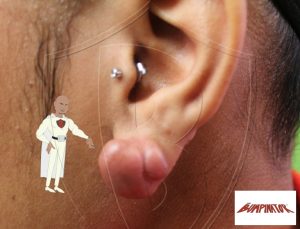
Before meeting Dr. U, also known as Dr. Bumpinator, Lawndale, Calif. teen had undergone an ear keloid removal procedure by a surgeon in Beverly Hills. Much to her chagrin, the keloids returned even more aggressive with disfiguration of her left earlobe. Frustrated, she turned to Dr. Bumpinator, for help.
“The Ear Keloids That Wouldn’t Go Away”
According to the teen, the first time she tried to remove the keloids, she was under anesthesia for a seven-hour surgery and was injected with steroids. But nothing seemed to work.
“They [administered] steroid injections and said it would go down, but it didn’t,” she recounted. “I think I may be allergic to steroid injections.”
The Rubbery Ear Keloids
It wasn’t that the steroid injections didn’t work or that she was allergic, Dr. Bumpinator explained, but in her case, she didn’t respond well to surgery. In conventional surgical methods, the keloids have higher tendency to not respond, get worse and grow much larger (1).

The patient looked to Dr. Bumpinator to help with her ear keloid that wouldn’t go away despite a prior surgery and series of steroid injections.

Aside from the left ear’s keloid, this Lawndale teen also had a right ear keloid from a piercingSeeing a second doctor to correct her first keloid surgery was not in her plans. The secondary keloids were worse than before. So worse that her left ear lobe had lost its shape – it was split with two keloids. She was frustrated and worst of all embarrassed by the unsightly bumps on her lobes.
As it turned out, Dr. Bumpinator confirmed her left ear had a massive shapeless keloid deformity caused by a split ear lobe. Her right ear also had a small keloid where once there was a piercing between the helix and snug region of the ear. Though benign, Dr. Bumpinator recommended excision of all lesions and repair of her left deformed earlobe.
Dr. Bumpinator’s Keloid Removal Approach
Earlobe keloids are the most common type of keloids. According to Dr. Bumpinator, the keloids start out as tiny bumps after a piercing. The actual act of piercing into the ear causes a wound or “small” trauma. The trauma coupled with the tension generated by the weight of the earring is enough to create a keloid during the healing. Sometimes irritation caused by the earring metals can aggravate the situation. The longer an ear keloid is present, the larger it will grow (1).
“I could tell she was stressed and disappointed by her worsen ear keloids,” Dr. Umar said.
Upon further examination of the patient’s multiple bumps, Dr. Bumpinator knew she would need two surgeries along with post-operative care. One surgery had to be dedicated to the left earlobe alone.
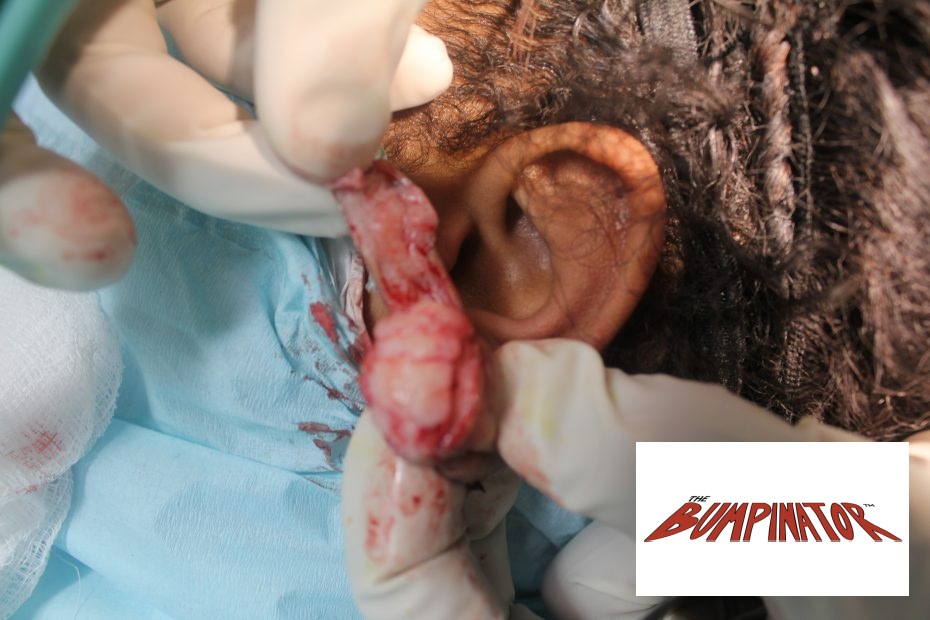
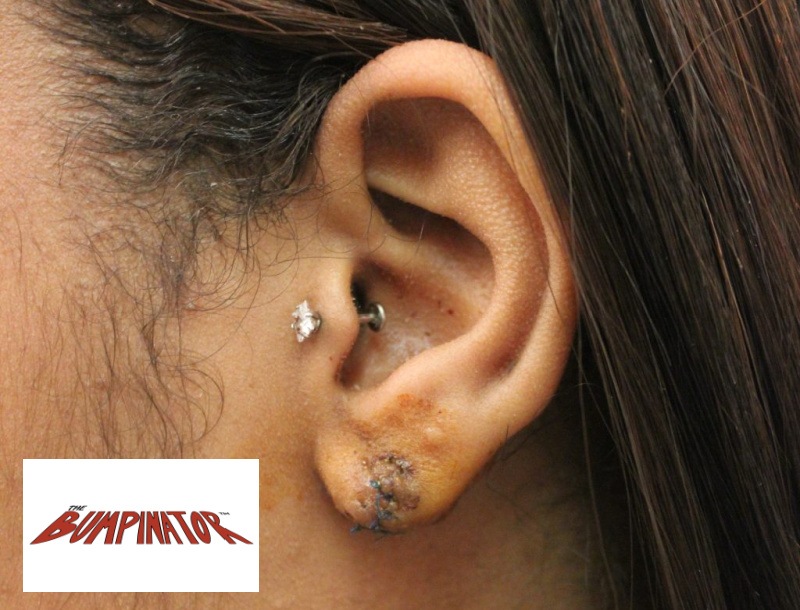
By cutting into the keloids and using the keloid itself as a flap, Dr. Bumpinator said the procedure minimizes the potential of the keloid reforming. Because of the complex nature of the repair and the history of prior surgery, Dr. Bumpinator took the extra precaution of adding a post-surgical radiation treatment to eliminate the chance of the keloid returning.
“Conventional surgical approach would entail just cutting it out and then closing with a suture or even leaving it open to close by itself” Dr. Bumpinator explained. “What we did was to remove her keloids while avoiding cutting into new areas and then creating a new earlobe for her.”
Aside from reconstructing her earlobe, Dr. Bumpinator was faced with the next challenge of keeping the right ear’s natural curvature. Here again, he instituted several innovative techniques from his tool box of experience to accomplish the task. The result is a maintained ear’s shape and concavity.
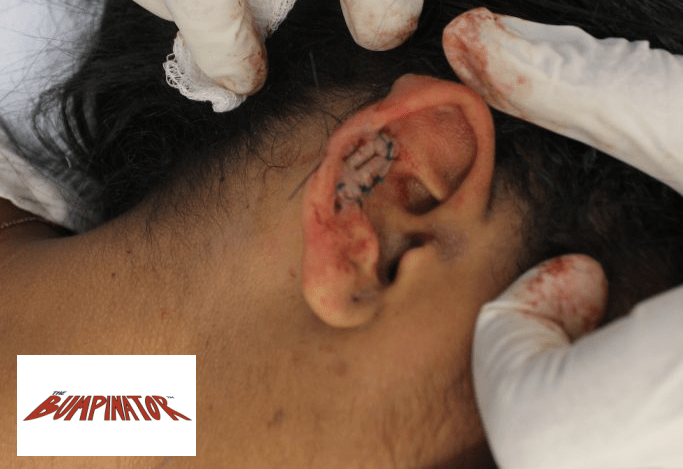
Before and After Photos
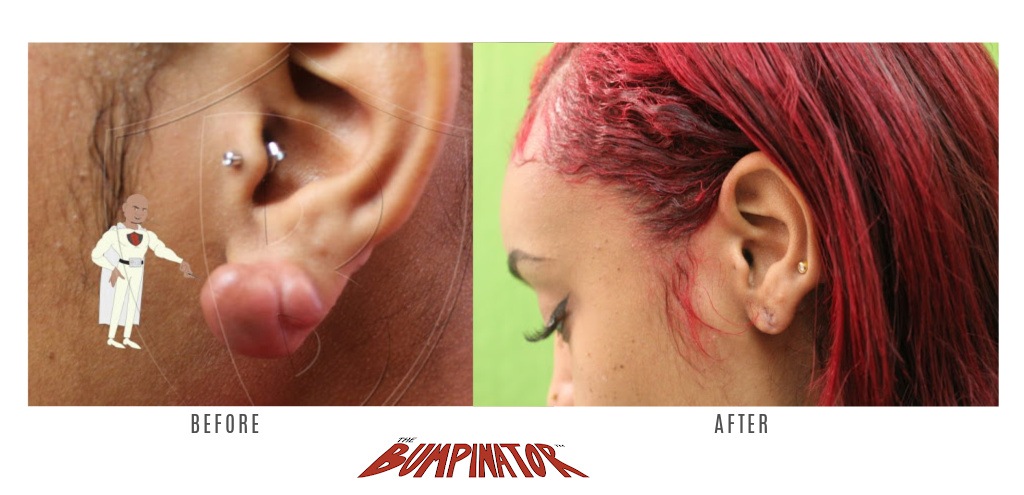

FAQ
How do I know what type of procedure would be best for my keloids?
Dr. Bumpinator offers an individualized treatment plan to remove keloids. He acknowledges that not all bumps are the same for everyone. Therefore, after a consultation, he will be able to determine the best viable treatment options for your case. Schedule a consultation to find out what type of treatment you need.
I’ve had multiple surgeries and treatments to get rid of my keloids, but nothing is working. What should I do?
Unfortunately, there are so many patients that are going through their third and fourth round of treatment to permanently get rid of the pesky keloids. The good news is Dr. Bumpinators, innovative methods, have helped a hefty number of patients permanently get rid of their keloids for good.
References –
- Tirgan, Michael. (2017). Massive ear keloids: Natural history, evaluation of risk factors and recommendation for preventive measures – A retrospective case series. F1000Research. 5. 2517. 10.12688/f1000research.9504.2.